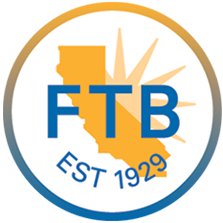Form 1120 Schedule D
Excise Tax Forms
Employment Tax Forms
Information Returns
Extension Forms
FinCEN BOIR
General
Introduction
Schedule D (Form 1120) is specifically designed for corporations to report their capital gains and losses from sales or exchanges of capital assets. For tax-exempt organizations, Schedule D (Form 1120) is relevant when there are capital gains or losses associated with unrelated business income.
This can occur when an exempt organization engages in activities or investments outside its core mission that generate income subject to taxation. In such cases, the organization must report these gains and losses on Form 990-T to ensure they are properly taxed.
In this resource article, we will help you understand Schedule D (Form 1120) by clarifying who must file, the filing requirements, and addressing commonly asked questions.
Table of Contents
What is Schedule D (Form 1120)?
Schedule D (Form 1120) is a tax form used by corporations to report capital gains and losses. The form requires detailed information about each transaction, including the description of the asset, date of acquisition, date of sale, sales price, and cost or other basis.
Schedule D provides a detailed breakdown of a corporation's capital gains and losses over the tax year. It helps the IRS determine the corporation's overall net capital gain or loss, which ultimately impacts their taxable income.
Who must file Schedule D (Form 1120)?
Any corporation that has capital gains or losses during the tax year must file Schedule D (Form 1120) along with their Form 990-T return. This includes:
- Corporations that bought and sold capital assets.
- Corporations that received distributions from investment funds that report capital gains.
- Corporations that experienced involuntary conversions of property (e.g., due to casualty or theft).
Complete your Schedule D (Form 1120) filing requirements and e-file your Form 990-T return with TaxZerone. It's simple and easy!
Schedule D (Form 1120) Filing requirements
Below, we have provided Form 1120 Schedule D filing requirements for each part.
Part I - Short-Term Capital Gains and Losses
This part requires information on the Short-Term Capital Gains and Losses held a year or less by the organization. Provide the required information to complete this part.
Part II - Long-Term Capital Gains and Losses
This part requires information on the Long-Term Capital Gains and Losses held for more than a year by the organization. Provide the required information to complete this part.
Part III - Summary of Parts I and II
The value for Part III, line 18 is derived from Parts I and II.
To complete this part, calculate the values from Part II and III and enter the summary value in line 18 and on Form 1120, page 1, line 8, or the applicable line on other returns.
Choose TaxZerone to complete your Schedule D (Form 1120) filing
TaxZerone is an IRS-authorized e-file service provider, that offers more than just a seamless 990-T e-filing experience.
When you file with us, you receive instant updates on your 990-T return's filing status, ensuring you're always informed and in the know!
Our user-friendly platform is designed to simplify the e-filing process while providing comprehensive support at every step.
Here's how your Form 990-T return with Schedule D (Form 1120) attachment is transmitted to the IRS in 3 simple steps!
- Provide Organization Details - Choose the tax year for which you want to file the 990-T return, and provide your organization’s details.
- Preview Schedule D (Form 1120) - Attach Schedule D to report capital gains and losses from sales or exchanges of capital assets and preview the information provided in the return for accuracy before transmitting.
- Transmit to the IRS - Transmit Schedule D along with your 990-T Return to the IRS and get the acceptance in just a few hours.
Even if the IRS rejects your Form 990-T return, there's no need to worry! TaxZerone has your back with a hassle-free correction and retransmission process, all at no extra charge!
Choose TaxZerone for a filing experience that goes beyond expectations.
Empower your tax compliance journey with us today!
E-file Now



